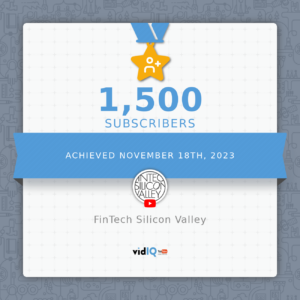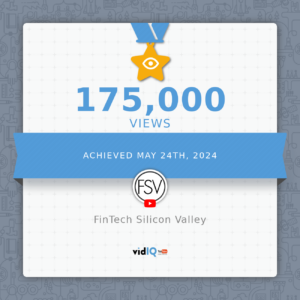Matthew Le Merle, CoFounder Fifth Era & Managing Partner Keiretsu Capital, the world’s largest angel network and most active US venture investor. Matthew is a sought-after speaker and innovation consultant having worked at McKinsey, A.T. Kearney, Monitor, Booz and Gap. Matthew has degrees from Christ Church, Oxford (MA/BA) and Stanford (MBA). He was born in London, UK and now lives in the San Francisco Bay Area with his wife, Alison Davis, and their five children.
Guest Post by Matthew Le Merle, Managing Partner Keiretsu Capital
For more than 25 years I was a strategy advisor to companies like Bank of America, Blackrock, Chase, eBay, Google, HP, Microsoft, PayPal, Visa, and others. I worked as a senior partner and consultant at strategy firms AT Kearney, Booz, McKinsey and Monitor and helped clients set corporate strategy, go to market plans, partnerships and acquisitions, and also drove new product launches and the building out of new innovation capabilities.
The last two decades I have been focused on technology investing. I help lead the world’s most active early stage investment network (Keiretsu) and am general partner with Alison Davis at the KC Blockchain Fund of Funds where we back the best Blockchain venture capital firms. We are also advisors at Blockchain Capital, BitBull, Bitwise, Codex, Hadron, Liquineq, ReadyUp, Securitize, Spark and others. Our own family office, Fifth Era, backs teams that understand digital commerce, content and fintech technologies including Blockchain.
What happens when you cross the fundamentals of competitive advantage with our new, emerging world of Blockchain and Crypto?
Here is my thought experiment on that question.
Context: 2019 Predictions
I have just finished reading a large number of “2019 Outlook for Blockchain and Crypto” stories posted on Medium and other settings. They were interesting and thought provoking, but inevitably when you focus on a one year outlook, you end up being very tactical. What upgrades and new features should we expect from the leading Blockchain protocols? What price do we predict for Bitcoin or other leading cryptocurrencies? Which development platforms will gain strength and who will drop out of the race this year?
Furthermore, most of the time, the postings were also highly technical. Which is important, of course, for the developer community in this timeframe. But what if you miss the wood for the trees? Because the very platform upon which you are building won’t be around in the future, because you were one of a host of projects competing for the same opportunity and others captured the key points of advantage first, or because some other development protocol became the better place to base your DAPP given the market it is focused on?
How do you establish a longer term view to make sure you are not blindsided by being over focused on the short term?
Setting Competitive Strategy
When we set competitive strategy, we don’t begin with the one year outlook. We always start further out, and then work backwards. We are looking to determine long term competitive advantage in markets and industries where multiple well capitalized competitors are going head to head to win. In some industries with long lead times and capital cycles, we start ten and more years into the future. In rapidly changing industries, sometimes we start three or five years out. Because the pace of change may invalidate longer term views before we get to them.
We don’t try and make point predictions. Instead we look for possible future outcomes or scenarios. We look for driving forces, key success factors, actions that are likely to enhance the chance of winning, blocking out competitors or making them fail. Then we use those insights to inform the short term action plan. The 2019 plan if you will.
So in this thought experiment, I want to define a few of those ‘inevitable truths’ that might inform a competitive strategy session for a leading blockchain project. If a project team wanted to think like leading ‘centralized’ companies do.
Here are my top 10 most important ‘so what’s’ from the thought experiment.
- The Internet Will Continue Evolving: Digital Monies & Assets Needed
This is the big one, and so let’s start with it. Everything about Blockchain and Crypto are only important because we are in the process of migrating to a fully digital world. We started 40 years ago when the Internet was first conceptualized and the initial communication protocols were established. 20 years ago we really got to work, and today everyone relies upon the Internet almost all of the time.
But the Internet and the protocols upon which it is built (TCP, IP etc.) is built for communication. It is NOT built for commerce. So we tell each other what we want to buy or sell, for example, and then we go ‘off Internet’ to transact. The financial and commercial implications of our ‘on Internet’ communications are always transacted ‘off Internet’. On payment rails, financial marketplaces, asset registries, and so on that have remained broadly unchanged for almost 100 years.
We have an Internet that is good at digital communication but which lacks native digital monies and which does not support native digital assets.
We need both to complete the migration to a fully digital world and we are without question going to continue to move down that path.
Oh, and yes, security, identity, trust, speed, cost, and reliability matter too, and across all of these dimensions the Internet we have is old and troubled.
Implications: This is why Blockchain and Crypto matter: more than anything else, they hold the promisef of bringing digital monies and assets ‘into’ the Internet. Project entrepreneurs, investors and others should keep this always uppermost in their minds in 2019. Blockchain based payments, digital registries, security tokens, accounts and exchanges. This is what will drive the next phase of the Internet’s evolution and so this is where the traction will be.
2. Most Blockchain Projects Will Fail
I am sorry to be the bringer of bad news. But in all areas of innovation, failure is the norm. The angel and venture capital failure rates are between 55 and 65 percent even after they have done exhaustive due diligence, and worked for years to help the teams they back make a go of it. The crowdfunding failure rate is probably more than 80% though crowdfunding is too new for us to be sure.
How could we expect anything other than massive failure for the world of Blockchain projects?
Even before we consider scams, plagiarized white papers, projects that while worthy, never made any commercial sense, and so on.
Implications: In 2019 the failure rate among the first wave of Blockchain projects backed in 2018 and before will spike. Most of the Crypto tokens will be abandoned, or will crash in value. Even though point 1 is still true. There is an enormous need for these projects — but only for the really good and deserving ones. If you are an investor, invest using the best practices of early stage technology investing (read our book “Build your Fortune in the Fifth Era”available at Amazon.com) and always be diversified.
3. The Bad News Comes First
Failure always comes first. In areas of new technology the initial barriers to entry are often low. Teams of entrepreneurs can say they plan to compete and often investors, excited by the promise of a new technology, will seed them with the money they need to get started.
The complex realities of applying new technologies to make products and services that people really want, only surface later. And new markets only become competitive even later on. So the losers begin to drop out as they are confronted by these inevitable realities and as their money begins to run out. Those that continue to play, not only begin to show traction, but find that follow on capital flows towards them and not to the also rans.
However, it takes a long time to move an established way of doing something let alone to meet a truly new or unmet need.
Implications: The shakeout has begun. In 2019 the bad news will be widespread, but that does not mean that the good news will begin to flow. Expect that later. Investors understand how J curves work.
4. A Few Potential Winners Will Begin to Emerge
At the Blockchain protocol level, the competitive battle will begin in earnest. In every area of technology we have seen emerge over the last 40 years, the pattern has always been similar. First we see a few pioneers, then a plethora of want to be’s, and then a shakeout, often accompanied by consolidation and feature acquisition, with the eventual emergence of a handful of large and capable competitors.
The mainframe wars, the operating system wars, the search and browser wars, the mobile operating system wars, and so on, prove this observation.
What does this battle look like?
First, in software, it is a war for the best developers. There are only a finite number of Blockchain developers and the best can work anywhere they want. Protocols that make a compelling story to their developer community will pull ahead — attracting, and even raiding, the best developers, miners and so on. Smarter protocols will make their story much more compelling than the others. We see this everyday in software development where once strong players suddenly see a ‘run on the bank’ as their key developers leave for greener pastures. For 20 years we have seen this in digital entertainment, where once blockbuster games suddenly are abandoned as the best game makers move to create new offerings (and we learned communities are fickle, and its had to make digital assets and virtual currencies cross the narrowly defined interests of specific publishers and game makers).
Second, expect feature expansion. Most protocols begin with a focus on something they want to do really well. Once they master that, they begin to add the features and foci of their principal competitors. If one protocol is good at smart contracts, then to compete a protocol that might be good at store of value, may need to add smart contracts too. And vice versa.
Third, while sometimes this is organic feature expansion, often it happens by consolidation. The protocols that are beginning to pull ahead, hoover up teams and even other projects to enhance their competitive position. The strong get stronger by cannibalization of the weak.
Implications: In the top 20 Blockchain protocols by market capitalization, we already see some that have next to no developers working on them. In 2019 expect more to be abandoned and their values to collapse once the reality becomes obvious.
4. Potential Winners Will Start to Play Hard With Each Other
If cannibalizing the developer communities of your competitor protocols does not already sound like hard ball, consider some other competitor strategies that are widely used in traditional industries.
In traditional competitive software markets, perhaps you might steal your competitors most important clients and users, undermine their pricing strategies or attack their economic profit pools. You might launch copyright and IP protection campaigns. Cautiously, you might harm your competitors perhaps by having others file legal, competitive or regulatory cases against your competitors. The list is long.
I am not suggesting that you would engineer a 51% attack against your competitor protocol to get it dropped by exchanges and put out of business. But you never know.
When survival is the objective, people begin to compete much less graciously. The “we are all in this revolution together” mindset gets replaced by a “my team has got to survive” mindset, and the feasible set of competitive tactics and strategies grows as that change takes place.
Implications: Expect to see the leading projects and protocols act more competitively and less collaboratively in 2019.
5. Most Surviving Projects Will Move Beyond Their Start Up Phase
For those projects that are still moving forward into 2019 and beyond, the reality sets in that the early euphoria of a white paper and fund raising campaign is now to be replaced by the hard reality of building the products and services that were promised to the community that backed the project.
It is easy to say that a new technology will change the world. It is easy to find a big current challenge or unmet need that really should be solved. It is also easy to combine the two and say that you will solve a world problem with a new (Blockchain) technology.
Actually bringing products to the point that they are ready for real world use, convincing users to shift from whatever they were previously using to your new offering, and aligning existing players, channels, outlets, service partners, etc. to support the new offering is a world of work. And most of the time, start ups just fail to go from concept to business reality.
Implications: Expect many teams to give up in 2019 when they realize that concept and reality are not the same thing — for many the work needed to make something real will prove to be beyond their capabilities — or just not that attractive to commit themselves to.
6. Building Global Technology Businesses is More Than Technology
Every Blockchain project backed in 2018 or before, began with the proposition that new technology would be able to meaningfully make the world a better place. In almost every case, the people who made those claims, and wrote those white papers, were technologist.
Building a global technology businesses is about more than technology. Supporting a global community is about more than open source technology development and a motivated community. Every use case, every potential product and service, will require a host of other capabilities.
Customer service, sales, marketing, advertising, finance, regulatory, human resources, and so on. These functions and capabilities take up the majority of the people at technology leaders like Amazon.com, Apple and Google. So too, in the ecosystems that surround communities like Bitcoin, EOS, and Ethereum, and in the emerging companies like Abra, Coinbase, Ripple and Securitize. The balance of work will begin to shift in 2019 from focusing on technology, to focusing on building global communities and businesses that can conquer the go to market challenges and ensure adoption and usage.
Implications: Being good at much more than technology will be essential to compete successfully in 2019.
7. Capital is Not Enough to Win — Smart Capital is King
In 2019 it will become apparent that raising capital, which seemed so easy in 2017 and the first half of 2018, is not sufficient to help a project win.
In traditional technology investing we know that capital is only enough to get started and to fund the engine you build. Much more vitally, ‘smart capital’ brings with it the ability to help the portfolio companies set strategy, build capabilities and get to market with momentum. The best technology venture capital firms like Andreessen, Draper, RRE and Sequoia are successful only partially because they have capital. As Sequoia puts it “we are good at building public companies.”
In Blockchain, the hundreds of crypto hedge funds that were stood up over the last two years will begin to shakeout as the collapse in Cryptoasset valuations shows up in their performance — most of the traditional hedge funds who moved into Crypto are not value added investors (they are traders) and most of them have funds that allow redemption. In 2019 we will see a flight of capital from most of them, with a handful of better funds surviving.
More importantly, the value of the long term investors in Blockchain, will become apparent. The best Blockchain venture investors, like Blockchain Capital, Castle Island, Future\Perfect, Pantera to name just four, will become apparent because of the value added they provide to the companies they back. Meanwhile, the funds that just bring capital, will be, and should be, avoided by the best teams and the best projects.
Implications: If you are a Blockchain entrepreneur, convince the best investors to back you, if you are an investor, invest alongside or through the best value added investors, and if you are trying to be a Blockchain fund focus on determining what value added you can secure that will make your investments the winners.
8. Location Does Matter
I was born in England. After more than 30 years in the US, I am now a proud dual citizen. But I remember.
Britain has been an expert for centuries at making British overseas territories good places to get regulatory and tax advantages such that some companies, investments, funds and so on, chose to locate their legal entity in those locations. Bermuda, Cayman Islands, Gibraltar, Jersey, Isle of Man — the list is long.
However, that does not, and never has meant, that those places are good for entities to locate themselves and their people. Innovation occurs in innovation hubs. Finance and commerce occur in global economic centers. While users, communities and partners are everywhere, they tend to be in the most affluent and populated parts of the world.
Implications: You aren’t going to succeed if you think your project and your people are going to be based in Gibraltar, Malta or any other tax haven. Indeed, thinking that way only limits your ability to compete in the medium term. In order to be the long term winner you need to serve the globe and for better or worse that means operating in locations and in ways that work across jurisdictions. Trying to hide in a regulatory or financial haven only puts a regulatory bullseye on your forehead that will slow you down enormously once the competition really begins.
10. Taxes do have to be paid
This one I add to the list because during the Dotcom boom and bust too many friends found out the hard way what happens when you forget about the tax obligations that you are creating as you move forward.
One of the most common tax traps of the Dotcom era was to start a company, get options, incur taxes on your option grants at the then value, maybe exercise the options without paying your taxes, then see your company fail and the value of your options and/or stock go to nothing.
Unfortunately, the tax obligation did not go away.
So too in Crypto. People have been buying, selling, making gains, not paying anything on those gains. If the assets go to zero, it does not automatically mean that the tax obligation is written off. Especially, if some of the gains were consumed before the losses wiped out the rest of the position.
Implications: In 2019 the tax man cometh. Please do be prepared by banking the money you will need to pay your tax obligation as you go.
I could go on.
But you get the point I am sure.
Good strategy is not set by focusing on a one year outlook and a set of one year predictions. Indeed, the risk of missing the forest for the trees is always an ever present threat when busy people focus on what they need to worry about this week.
The only way to win in the long term, is to put your head up from time to time and take the long view. In Blockchain and Crypto, a few of the leaders have begun to do just this, and they are preparing now for a much more competitive game which is coming fast.
Don’t be one of those blindsided when Blockchain becomes an intensely competitive arena.


















